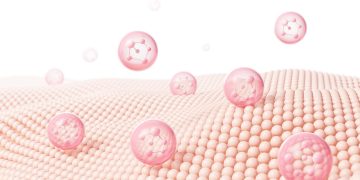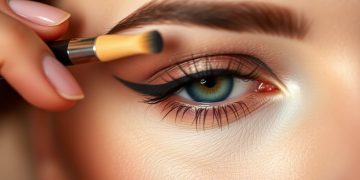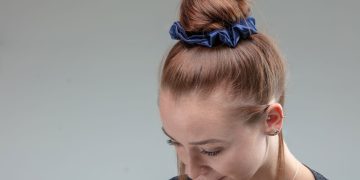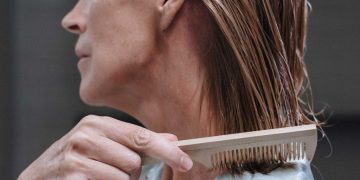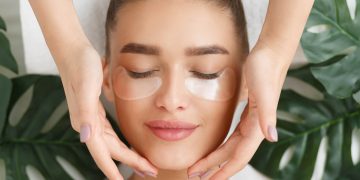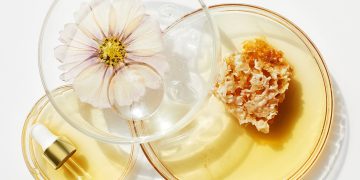Hair texture plays a vital role in how your hair looks, feels, and behaves. Whether your hair is fine and limp, thick and coarse, dry and frizzy, or oily and flat, each hair type comes with its own set of challenges. Fortunately, advancements in professional hair care make it easier than ever to address these issues with tailored treatments, expert techniques, and the right salon-grade products.
In this article, we’ll explore the most common hair texture problems and how professional care can help restore health, balance, and beauty to your strands.
1. Dry and Frizzy Hair
The Problem:
Dry hair lacks moisture and is often rough, dull, and difficult to manage. It’s commonly accompanied by frizz, which occurs when the outer layer (cuticle) is raised and allows moisture from the air to enter, causing hair to puff up and become unruly.
Professional Solutions:
- Deep Conditioning Treatments: Salons offer intensive hydration masks that penetrate deep into the hair shaft, smoothing cuticles and restoring elasticity.
- Olaplex or Bond-Building Therapies: These strengthen internal hair bonds damaged by heat or chemical processes, helping hair retain moisture and structure.
- Keratin Treatments: Professional keratin smoothing treatments seal the hair cuticle, reduce frizz, and add long-lasting smoothness and shine.
At-Home Maintenance:
- Use sulfate-free, moisturizing shampoos and conditioners.
- Apply leave-in conditioners or hair oils like argan or jojoba.
- Sleep on silk pillowcases to reduce moisture loss and friction.
2. Oily and Flat Hair
The Problem:
Excess oil on the scalp can weigh hair down, making it appear flat, greasy, and lifeless — especially at the roots. Often, people with fine or straight hair struggle most with this.
Professional Solutions:
- Scalp Detox Treatments: These remove buildup from styling products, sweat, and sebum, helping to rebalance the scalp and restore volume.
- Clarifying Services: Professional clarifying shampoos used periodically can deeply cleanse the hair without stripping essential moisture.
- Layered Haircuts: A stylist can add movement and volume through precision cutting to prevent the hair from lying too flat.
At-Home Maintenance:
- Use volumizing or balancing shampoos specifically designed for oily scalps.
- Avoid applying conditioner to the roots — focus on mid-length to ends.
- Use dry shampoo between washes to absorb excess oil and add lift.
3. Fine and Limp Hair
The Problem:
Fine hair tends to lack body and can be difficult to style. It often becomes oily quickly and may appear flat or thin, making it harder to hold volume or curls.
Professional Solutions:
- Volumizing Blowouts: Salons use round-brush blow-drying techniques and volume-enhancing products to create lift and bounce.
- Lightweight Keratin or Protein Treatments: These strengthen fine hair without weighing it down.
- Precision Layered Cuts: Stylists can add strategic layers to build movement and shape.
At-Home Maintenance:
- Use lightweight volumizing mousses or root-lifters.
- Avoid heavy creams or oils that can flatten fine hair.
- Flip hair upside down when blow-drying to maximize volume.
4. Thick and Coarse Hair
The Problem:
Thick or coarse hair can feel heavy, be prone to dryness, and often requires more effort to detangle and style. Without proper care, it may appear bushy or unmanageable.
Professional Solutions:
- Texturizing Cuts: Salons can thin out bulk with professional shears or razors while maintaining overall shape.
- Smoothing or Relaxing Treatments: Chemical or natural smoothing services can soften texture and reduce puffiness.
- Customized Conditioning Services: Professionals use targeted products to soften and hydrate coarse strands.
At-Home Maintenance:
- Use hydrating masks weekly to keep coarse hair manageable.
- Choose creamy, rich shampoos and conditioners with oils or butters.
- Air-dry with styling cream to enhance natural texture and reduce volume.
5. Color-Damaged or Chemically Treated Hair
The Problem:
Hair that has been dyed, bleached, permed, or chemically straightened often suffers from increased porosity, breakage, and dryness.
Professional Solutions:
- Bond Repair Treatments (like Olaplex, K18, or L’Oréal Metal Detox): These help rebuild the internal hair structure damaged by chemical services.
- Protein Reconstructors: Help restore strength to fragile hair by replenishing lost keratin.
- Color-Protective Glossing Services: Seal the cuticle and lock in color while adding shine.
At-Home Maintenance:
- Use shampoos and conditioners specifically for color-treated hair.
- Avoid heat styling when possible, and always use heat protectant.
- Limit washing to preserve color and reduce dehydration.

6. Curly and Textured Hair
The Problem:
Curly and coily hair types often face dryness, tangling, shrinkage, and uneven curl patterns. They need extra moisture and care to maintain definition and softness.
Professional Solutions:
- Curl-Specific Hydration Treatments: Professional masks and hydration steamers can restore bounce and prevent breakage.
- Curly Cuts (e.g., DevaCut): Precision cutting for curls ensures each coil is shaped naturally and evenly.
- Protective Styling Guidance: Professionals can help choose low-manipulation styles that prevent stress and breakage.
At-Home Maintenance:
- Use the LOC (Liquid–Oil–Cream) method to lock in moisture.
- Avoid harsh brushing — detangle with fingers or wide-tooth combs.
- Sleep with a satin bonnet or use a silk pillowcase.
7. Split Ends and Breakage
The Problem:
Split ends and mid-shaft breakage occur when the hair fiber weakens, usually due to over-styling, chemical exposure, or lack of moisture.
Professional Solutions:
- Micro-Trimming: Regular, small trims remove damaged ends without sacrificing length.
- Cuticle-Sealing Treatments: Help lock in moisture and smooth rough ends.
- Protein + Moisture Balance Services: Correct the internal imbalance between strength and flexibility.
At-Home Maintenance:
- Avoid excessive brushing or towel-drying.
- Apply lightweight oils or serums to protect ends daily.
- Sleep with your hair braided or wrapped to prevent friction.
Final Tips: Customizing Care with a Professional
Every hair texture has its own needs, and the best way to care for your hair is by consulting a trusted stylist who can:
- Analyze your scalp and strand health
- Recommend targeted salon treatments
- Create a long-term care plan
- Suggest products suited to your lifestyle and climate
Consistency is key — professional care lays the foundation, but daily at-home habits make the biggest difference in maintaining healthy, vibrant hair.
Conclusion
Whether you’re dealing with frizz, flatness, breakage, or excessive oil, there’s a professional solution that can help you reclaim the health and beauty of your hair. With the right treatments, products, and expert advice, even the most stubborn hair texture problems can be managed — and transformed. Remember, your hair deserves care that’s as unique as you are.

